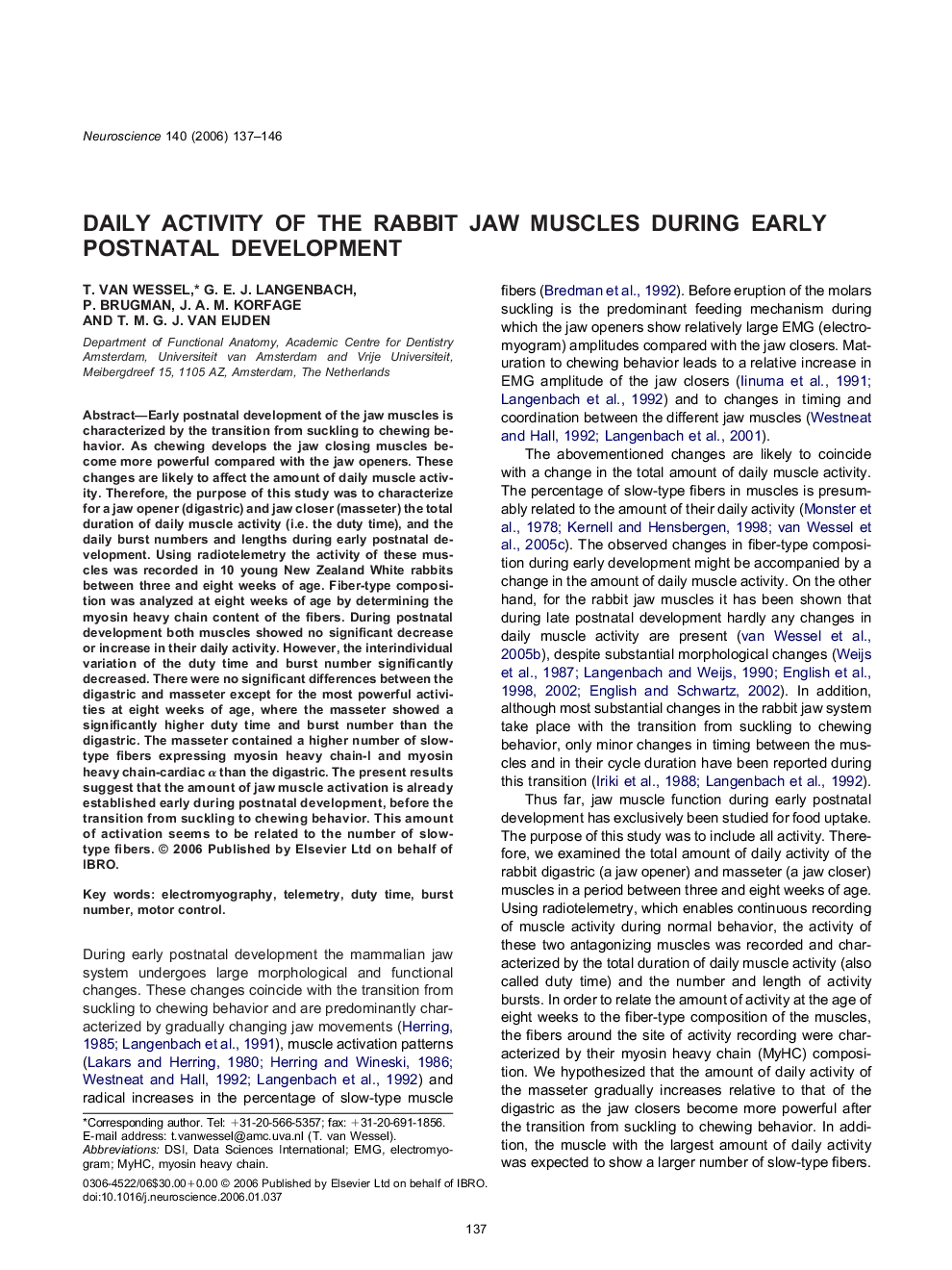| کد مقاله | کد نشریه | سال انتشار | مقاله انگلیسی | نسخه تمام متن |
|---|---|---|---|---|
| 4342812 | 1295902 | 2006 | 10 صفحه PDF | دانلود رایگان |

Early postnatal development of the jaw muscles is characterized by the transition from suckling to chewing behavior. As chewing develops the jaw closing muscles become more powerful compared with the jaw openers. These changes are likely to affect the amount of daily muscle activity. Therefore, the purpose of this study was to characterize for a jaw opener (digastric) and jaw closer (masseter) the total duration of daily muscle activity (i.e. the duty time), and the daily burst numbers and lengths during early postnatal development. Using radiotelemetry the activity of these muscles was recorded in 10 young New Zealand White rabbits between three and eight weeks of age. Fiber-type composition was analyzed at eight weeks of age by determining the myosin heavy chain content of the fibers. During postnatal development both muscles showed no significant decrease or increase in their daily activity. However, the interindividual variation of the duty time and burst number significantly decreased. There were no significant differences between the digastric and masseter except for the most powerful activities at eight weeks of age, where the masseter showed a significantly higher duty time and burst number than the digastric. The masseter contained a higher number of slow-type fibers expressing myosin heavy chain-I and myosin heavy chain-cardiac α than the digastric. The present results suggest that the amount of jaw muscle activation is already established early during postnatal development, before the transition from suckling to chewing behavior. This amount of activation seems to be related to the number of slow-type fibers.
Journal: Neuroscience - Volume 140, Issue 1, 2006, Pages 137–146